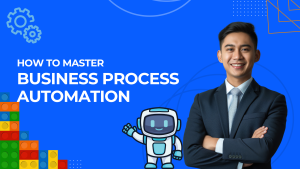The Evolution of SEO: From Traditional to Modern SEO
Jan 20, 2025 | Norvi
Search Engine Optimization (SEO) has come a long way since the days of keyword stuffing and directory submissions. What once revolved around manual tactics and static strategies has transformed into a sophisticated, data-driven discipline. The rise of modern SEO is changing the game, pushing marketers to think beyond the basics and leverage technology to scale their efforts. But how did we get here? And more importantly, what does this shift mean for businesses and marketers today?
This article takes you on a journey through the evolution of SEO—from its humble beginnings to the cutting-edge techniques reshaping the digital landscape. We’ll explore how the early approaches focused on appeasing search engines, often ignoring user experience. Then, we’ll dive into the era of algorithm updates and content quality, where strategy and creativity found their balance. Finally, we’ll unpack the rise of modern SEO, a new frontier that combines automation, AI, and data to create massive, personalized content outputs that drive measurable results.
Here’s the catch: while modern SEO promises efficiency and scale, it’s not a magic wand. Missteps in its execution can lead to bloated websites, thin content, and penalties. On the flip side, understanding its potential and applying it strategically can unlock unprecedented opportunities for growth.
By the end of this article, you’ll gain clarity on where SEO has been, where it’s headed, and how you can align your strategies to stay ahead of the curve. Whether you’re a seasoned marketer or a business owner looking to boost your online presence, this is a must-read.
Let’s begin by looking back at the traditional foundations of SEO—because understanding where we started is the key to understanding where we’re going.
The Evolution of SEO: From Traditional to modern SEO
Search Engine Optimization (SEO) has undergone a remarkable transformation since its inception. What began as a straightforward strategy to enhance website visibility has become a multifaceted discipline driven by data and automation. This article explores the journey of SEO, shedding light on the transition from traditional methods to the cutting-edge approach known as modern SEO.
The Early Days of SEO
In the early 2000s, SEO revolved around basic practices like keyword stuffing, link directories, and meta tag optimization. Back then, ranking on search engines like Google was a simpler task. Websites could achieve visibility by including as many relevant keywords as possible, often at the expense of readability.
However, these techniques lacked depth and failed to prioritize the user’s experience. Search engines eventually caught on. Algorithm updates such as Panda and Penguin penalized manipulative practices, forcing marketers to focus on quality over quantity. The shift emphasized creating content that not only pleased algorithms but also served real user needs.
Challenges of Traditional SEO
As digital marketing evolved, traditional SEO revealed its limitations. Manual optimization was time-consuming and resource-intensive. Businesses targeting multiple demographics or geographic locations struggled to scale their efforts. Additionally, traditional methods often lacked the personalization required to meet the diverse expectations of modern users.
This approach also relied heavily on guesswork. While analytics tools provided some insights, leveraging data effectively was not as prevalent as it is today. Marketers needed a new, scalable way to meet increasing demands while maintaining quality.
A New Frontier: modern SEO
modern SEO emerged as a solution to these challenges. At its core, modern SEO uses automation, data, and algorithms to optimize websites on a massive scale. This technique allows businesses to create thousands of pages tailored to specific user intents without sacrificing quality.
For example, e-commerce platforms can generate unique pages for every product variation, complete with optimized metadata and content. By automating repetitive tasks, modern SEO frees up resources for strategic initiatives while ensuring content is relevant and engaging.
The Mechanics of modern SEO
Unlike traditional methods, modern SEO is rooted in technology. It integrates tools like APIs, databases, and artificial intelligence to create dynamic, data-driven strategies. Businesses can use these tools to analyze search patterns, identify high-value keywords, and develop personalized content for different audience segments.
Additionally, modern SEO relies on advanced keyword clustering to address multiple search queries efficiently. By grouping related terms, marketers can craft content that aligns with various user intents, enhancing visibility and engagement.
The Benefits of modern SEO
modern SEO offers significant advantages. First, it allows for unparalleled scalability. Businesses can create and optimize thousands of pages quickly, something impossible with traditional SEO.
Second, it enhances efficiency. Tasks like generating meta descriptions or identifying internal linking opportunities can be automated, reducing manual effort.
Finally, modern SEO supports personalization. By leveraging user data, businesses can create tailored content that resonates with specific audiences. This improves user experience, boosts engagement, and drives conversions.
Overcoming Potential Risks
While modern SEO has clear benefits, it’s not without risks. Automated content generation can lead to quality issues if not carefully monitored. Thin or duplicate content can result in penalties from search engines, negating the advantages of automation.
To mitigate these risks, businesses must implement strong quality control measures. Regular audits and performance tracking are essential to ensure content aligns with both user needs and search engine guidelines.
Transitioning to modern SEO
For businesses looking to adopt modern SEO, the transition requires a strategic approach. Start by auditing your current SEO practices to identify gaps and opportunities. Next, invest in tools and technologies that support automation and data integration.
Building a team with expertise in modern SEO is also crucial. Virtual assistants (VAs) specializing in SEO can play a vital role here. They can handle tasks like data analysis, keyword research, and content generation.
Roles and Types of Virtual Assistants in SEO
Virtual assistants are invaluable in modern SEO strategies. They come in various types, each specializing in different areas:
SEO Analysts: Focus on analyzing data to identify opportunities for optimization.
Content Creators: Develop high-quality content tailored to SEO requirements.
Technical SEO Experts: Handle site audits, optimize website structure, and ensure crawlability.
Outreach Specialists: Build relationships with other websites to improve backlink profiles.
By outsourcing these roles to skilled VAs, businesses can scale their SEO efforts efficiently without overburdening in-house teams.
The Role of AI in modern SEO
Artificial intelligence (AI) is a game-changer in modern SEO. AI-powered tools can analyze vast amounts of data, predict user behavior, and automate content generation. For instance, AI can suggest keyword strategies or write meta descriptions for thousands of pages in seconds.
This level of automation not only saves time but also ensures that strategies are backed by data-driven insights, increasing the likelihood of success.
Measuring Success
Success in modern SEO is measured through specific metrics. Organic traffic growth, improved rankings, and higher conversion rates are key indicators. Monitoring these metrics helps businesses refine their strategies and maximize returns.
How SEO Copes with the Ever-Changing Marketing and Business World
The world of marketing and business evolves at breakneck speed, and SEO is no exception. Every year, new technologies, consumer behaviors, and market trends push SEO to adapt or risk becoming obsolete. It’s like running on a treadmill that’s constantly speeding up—you can’t afford to slow down.
Search engines like Google are the key drivers of change in SEO. With frequent algorithm updates, the rules for ranking are never set in stone. What worked a year ago might not even make a dent today. Think about the rise of voice search, mobile-first indexing, or the growing emphasis on user experience. These shifts demand that SEO strategies evolve to meet the changing needs of users.
Businesses have also changed the way they approach SEO. It’s no longer just about driving traffic—it’s about generating meaningful engagement and conversions. This has led to the integration of AI tools, data-driven insights, and personalized strategies into SEO practices. The beauty of SEO is its flexibility; it bends and adjusts to fit the mold of what businesses need. But this adaptability comes with its own set of challenges, particularly as we look to the future.
Challenges of Traditional SEO to Modern SEO—and What’s Next
Traditional SEO was a manual, painstaking process. It demanded endless hours of optimizing each page, conducting keyword research, and building backlinks one link at a time. While it worked in the early days, it was far from scalable. As businesses grew and the internet expanded, traditional SEO started showing cracks.
Enter modern SEO! This approach leverages automation and data to scale SEO efforts exponentially. But while it’s a game-changer, it’s not without its challenges. One of the biggest hurdles is maintaining quality. When you’re creating thousands of pages at once, it’s easy for thin or duplicate content to slip through the cracks—and search engines penalize that heavily.
Another challenge lies in the technical expertise required to implement modern SEO effectively. It’s not just about knowing SEO basics anymore. You need to understand APIs, data analysis, and automation tools. This creates a steep learning curve for many marketers.
Looking ahead, SEO faces even more challenges. As AI continues to integrate into search engines, the focus will shift to understanding natural language and delivering hyper-personalized results. Marketers will need to stay agile, continually upgrading their skills to keep up with these advances. And let’s not forget privacy concerns. With regulations tightening around data collection, SEO strategies that rely on user data will need to tread carefully.
Common Mistakes in Modern SEO
modern SEO may sound like the ultimate solution, but it’s not foolproof. Mistakes can cost you rankings, credibility, and even penalties from search engines. The most common misstep? Focusing on quantity over quality. It’s tempting to churn out thousands of pages to cover every possible keyword, but if those pages lack value, they’ll do more harm than good.
Another frequent mistake is ignoring the importance of human oversight. While automation is a cornerstone of modern SEO, it’s not a “set-it-and-forget-it” solution. Algorithms can’t always understand context or nuance, leading to irrelevant or redundant content. Regular audits are crucial to catch these issues before they escalate.
Many people also underestimate the role of data accuracy. modern SEO relies heavily on data inputs to generate content and optimize strategies. Feeding inaccurate or outdated data into the system can lead to poorly targeted efforts and wasted resources.
Lastly, neglecting technical SEO fundamentals can be a fatal flaw. Issues like slow page speeds, poor mobile optimization, or broken links can undermine even the best modern strategies. It’s essential to strike a balance between embracing automation and sticking to tried-and-true SEO best practices.
Conclusion:
The evolution of SEO from its traditional roots to the sophisticated, data-driven world of modern SEO encapsulates the adaptability and innovation required to thrive in the ever-changing digital landscape. What began as a simple endeavor to manipulate search engine rankings has transformed into a strategic, user-focused discipline powered by technology and data. This journey reflects not only the changes in search engine algorithms but also the dynamic needs of businesses and consumers alike.
Traditional SEO served as the foundation of modern practices, but it struggled to keep pace with the demands of scalability, personalization, and efficiency. Challenges such as manual optimization and limited data usage often hindered its effectiveness. modern SEO, however, has emerged as the solution, harnessing automation and advanced analytics to create tailored content at scale. It’s a game-changer that empowers businesses to reach diverse audiences with precision and speed.
The benefits of modern SEO are undeniable: scalability, efficiency, and improved personalization. These advantages allow businesses to stay competitive while meeting the increasingly specific expectations of their users. However, the journey is not without obstacles. Ensuring content quality, managing technical complexities, and staying compliant with privacy regulations remain pressing challenges. As we look to the future, the role of AI, natural language processing, and user-centric approaches will only grow, pushing SEO professionals to continuously adapt.
One key takeaway from this exploration is the importance of balance. While automation and data drive modern SEO, human oversight is crucial to maintaining relevance, quality, and authenticity. Neglecting technical fundamentals or rushing to scale without a solid strategy can lead to mistakes that undermine success.
This article has also highlighted the value of virtual assistants in supporting SEO efforts, showcasing their ability to handle tasks like keyword research, content creation, and analytics. By leveraging skilled VAs, businesses can navigate the complexities of modern SEO more effectively.
In conclusion, the evolution of SEO underscores the need for marketers and businesses to remain agile, informed, and innovative. Whether you’re just starting your SEO journey or looking to refine your strategies, understanding and embracing this transformation is essential for sustained growth. The future of SEO is promising, but it belongs to those who are willing to evolve. Let’s take that step forward, together!
Related Posts

- January 20, 2025
How to Master Business Process Automation
Home About Services Blog Go High Level Graphics Design...

- December 19, 2024
Skyrocket Your Sales: How Go High Level Can Transform Your Business
Home About Services Blog Go High Level Graphics Design...

- December 19, 2024
Top Features of GoHighLevel You Didn’t Know You Needed (Until Now!)
Home About Services Blog Go High Level Graphics Design...
Join Our Newsletter

